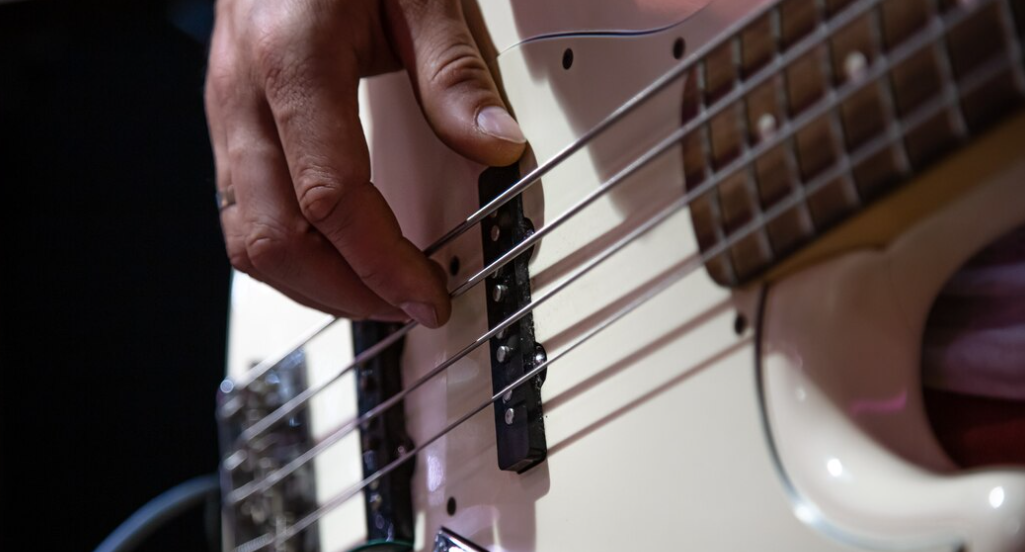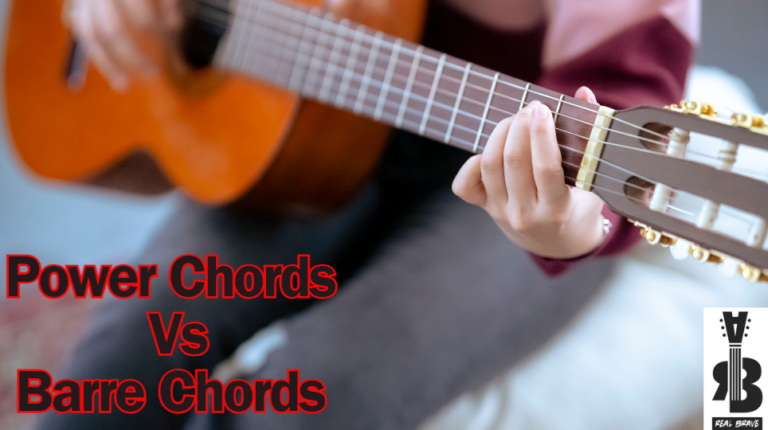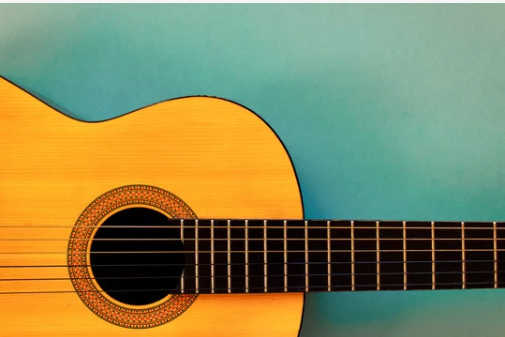How To Play The Amazing Power Chords

Power chords are a part of many musicians’ daily lives and can make things much easier for beginners. With them, you can play any song.
In the case of the guitar and the electric guitar, you can always place your fingers in the same shape to create any chord. Isn’t that fantastic?
However, their use is not limited to making the musician’s life easier. Power chords are essential for certain music styles such as hard rock and heavy metal, and they even appear in the guitar of other genres.
For some specific artists, there is no need to say much. Bands that play punk, for example, have much of their personality linked to the use of power chords.
But What Is A Power Chord?
A chord has at least three notes: the root (which gives it its name), the 3rd, and the 5th. However, the power chord lacks the 3rd, so it only consists of the root and the 5th. That’s why some people don’t like to call it a chord.
Power chords are neutral and don’t distinguish between major and minor chords because they lack the third (the note that determines whether a chord is major or minor). While it’s true that a power chord can be used as a substitute for both major and minor chords, it doesn’t specifically replicate the qualities of either. So, while you can play a C5 power chord, it won’t distinctly sound like either C major or C minor.
In chord notations, you will see that the power chord is represented by the chord name followed by the number 5. In the case of C, for example, you will see written “C5.”
To find a power chord, you’ll need to know the notes of the scale it belongs to. For example, below is a C major scale. The notes of a C5 chord are the 1st (the root) and 5th notes of this scale:

The Origin Of Power Chords
The first power chords came with the popularization of electric guitar amplifiers, along with blues and rock from the 1950s. At that time, musicians noticed that when chords were played with distortion on the electric guitar, the sound was not clear but rather entangled.
This happened because each note has its harmonic series with “complementary frequencies” to the roots (called harmonic frequencies), which change the final timbre of the sound.
Contrary to what happened with other intervals on the distorted electric guitar, something relevant was noticed between the root and the 5th. This interval had harmonic frequencies that sounded very good.
Moreover, it was much easier to make the sound less confusing and more pleasing with just two frets. To top it off, the saturation effect was amplified in this way. Ready, there was the perfect formula for that powerful, deep, and different sound to resonate through the amplifiers.
How Power Chords Are Made, The Most Common Way

Let’s say you want to play a C power chord — the C5 chord.
The most common and traditional way is generally made with the index finger on the root note, “C.” Head to the 5th string/3rd fret for this one.
Now, we’ll need our fifth, “G.” You can find this on the 4th string/5th fret. Play these two strings, and mute all the others.
Variations Of The Power Chord
Power Chord With The Doubled Root
Here we also play the root and the fifth. But in this case, we add the root once again. You will let three strings sound, but since one of the notes is repeated, it is still a traditional power chord (only with the root and the 5th).
To make this third note, you can use the pinkie finger, which will be below the ring finger (which is making the 5th). There you go. Now you have a “fuller” and more powerful chord without deviating from what defines a power chord.
“Inverted” Power Chord
Well, if the idea is to use only the root and the 5th, how about we switch their places? You can place this second note on the lower string and the root on the higher string.
The notes used still remain the same.
Let’s go to the famous example of the C power chord. One possibility is to play it with one finger on the third fret, 6th string, and another on the 3rd fret, fifth string. Very simple. On the lower strings, if you want, you can try repeating one of the notes or even both.
Author: Daniel Powers Jr, the founder of Real Brave™, serves as the chief inspiration to thousands of students in the Real Brave music instruction program. He’s also the visionary behind PracticePad™, an online platform for live one-on-one online music lessons, lesson tracking, and scheduling. Beyond his entrepreneurial pursuits, Daniel leads a non-profit organization that provides formerly homeless children with access to music education, making a profound impact on their lives. His unwavering dedication to music, innovation, and education continues to inspire individuals to reach their fullest potential while creating positive change in communities. Follow Real Brave on all the socials:
youtube.com/@realbraveinc
twitter.com/realbraveinc
instagram.com/realbraveaudio
facebook.com/realbraveinc





